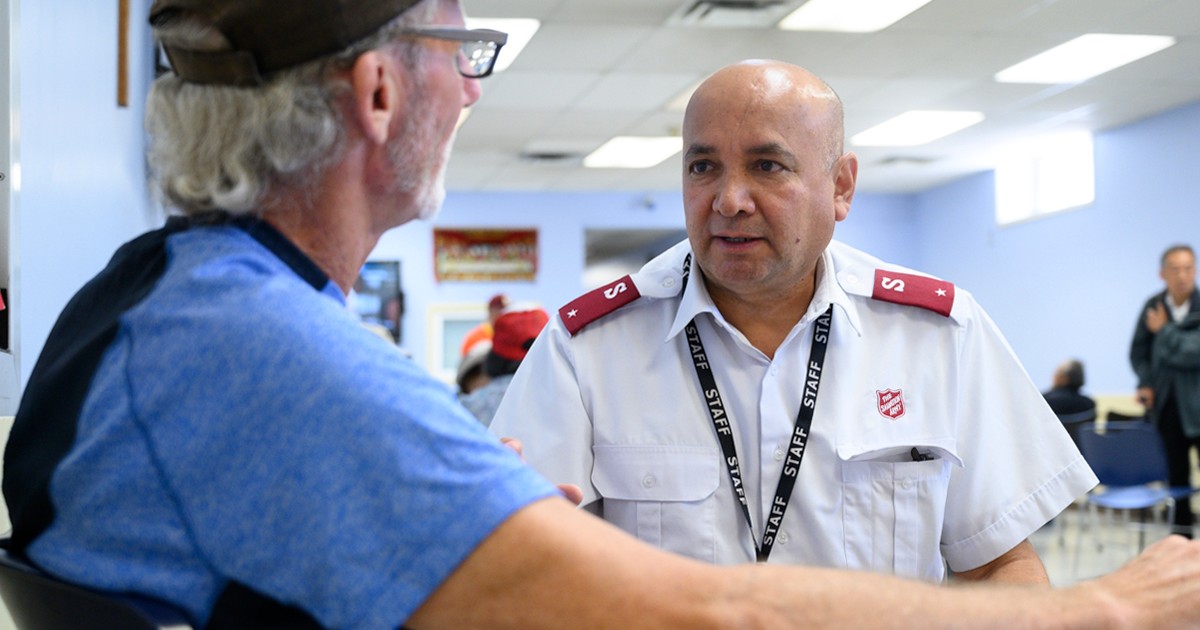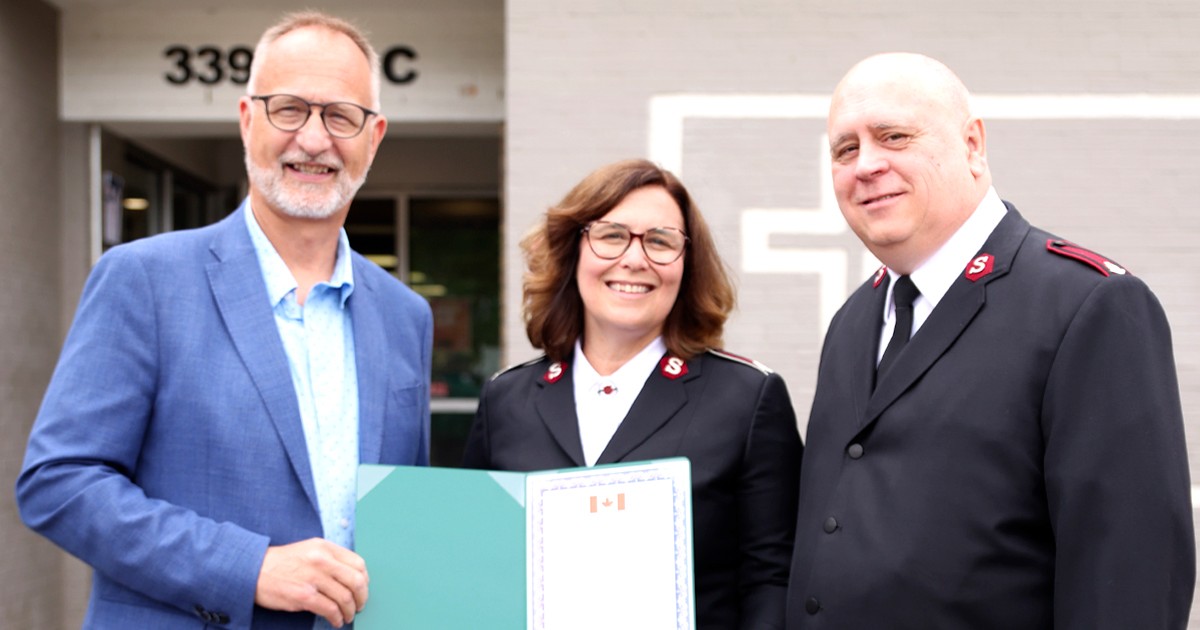Across the city of Winnipeg, there are encampments of people living outside—in bus shelters, tent cities, abandoned homes or makeshift structures of wood, blocks and tarps. Winnipeg has long cold seasons and often sees temperatures as cold as minus 50 degrees with a wind chill. The need is great, and it only rises in the wintertime.
“One winter, a few people set up their living quarters inside a huge pile of snow left by a plow,” recalls Major Mervyn Halvorsen, associate chaplain, Winnipeg Centre of Hope, and street ministry officer. “They dug into the side of it to stay out of the wind and snow. They stayed there until the snow began to melt in the spring.”
Major Halvorsen leads teams of volunteers that go out into camps to assess the need and provide wellness checks. “In one shift, we can see around 150 people,” he says. The outreach team offers necessary items such as food, cold and hot drinks, clothing and winter gear, footwear, hygiene items, sleeping mats and blankets. Their goal is to meet people where they are without judgment, and to build relationships that will hopefully help bring them to the Centre of Hope.
“We are always open for them. We want to get people in from the cold, whether for one night or a couple of nights—let them shower, get clean clothes and a hot meal,” says Mark Stewart, executive director. “If they are going to go back out there, they can at least go back out with warm clothes. We’re providing life-saving services when we bring people in from the cold.”
"We're providing life-saving services when we bring people in from the cold." - Mark Stewart
The Face of Homelessness
“I don’t think homelessness has one face,” Stewart notes. “There are multiple camps and they have different ways of living—in old shipping containers with a blanket, in tents or under bridges. We’ve found families living in cars when it is minus 30 degrees.”
In Winnipeg, there are larger encampments with up to 50 people living together, and smaller communities of only three or four people. “They all have their own rules and space,” says Major Halvorsen. “Sometimes folks gather outside to enjoy a fire. Some larger camps know each other well and will support one another. If there’s something going on, they will help out. But other camps are more dangerous, and some are led by gangs.”
Four days a week, the Salvation Army street outreach team goes into the city to find camps and check on those living there. Most people living in encampments are happy to see the community response unit arrive.

"When they see the Red Shield, they know we’re here to help. They know they have a friend,” says Stewart. “We’re not there to demean them or try to get them out of the camp; we’re just there to help and to hopefully offer a pathway into our shelter, especially in the winter.”
When they see that The Salvation Army cares for them, without criticism or putting them down, they can speak freely, and share their stories and struggles.
“A wellness check is just showing up and being there,” says Stewart. “We don’t want to intrude on their space. We wait to be welcomed in and we usually are. Once we are welcomed, we can ask how they are doing and what they need.”
From day to day, the wellness check will depend on what condition they’re in—are they down? Are they excited? Are they hurt or harmed? Are they looking for housing? Do they need mental-health support or crisis intervention? Based on the assessment, the outreach team can give referrals, call an ambulance, or transport people to hospitals, shelters orother partner organizations. The goal is to support people however they need it, whether by helping them warm up and find shelter or just providing a listening ear, and emotional and spiritual support.
In From the Cold
The Salvation Army Centre of Hope has more than 180 private rooms, a 60-bed family shelter, 45-bed emergency shelter, and provides three meals a day to residents. As part of the outreach ministry, Major Halvorsen invites people to come to the Centre of Hope where they can find warmth, shelter, a bathroom, shower and food. If someone does choose to come to the Centre of Hope, they can access further supports and Salvation Army caseworkers are available to help them find long-term accommodations.
“There are some people that come to the Centre of Hope for food but may not want to stay. In the winter, we are a stop-off point. People come in to get warm. A lot of the people in the camps already know us, so they come in and say hi,” says Stewart. “There are still a lot of myths out there about how shelters work and so we’re just trying to provide the right information and build those relationships.”
Still, not everybody living outside wishes to stay in a shelter. Many report that they don’t feel safe or that they prefer the freedom they have outside. By having a consistent and supportive presence in the camps, the Salvation Army team can introduce themselves, build trust, mend conflicts and provide practical assistance while showing that the Army is here for them.
This story is from:










My son and I have regularly gone out on these visits, volunteering with Major Merv. In fact, I took these photos. The people are so glad to see us, and we've seen such uplift in the community as people look out for each other. As Proverbs 11:25 says, "Those who refresh others will themselves be refreshed." I think that Mark is a civilian director, no rank.